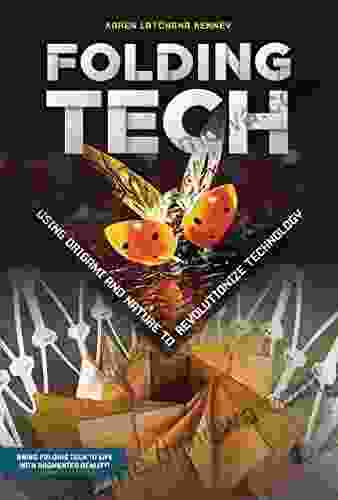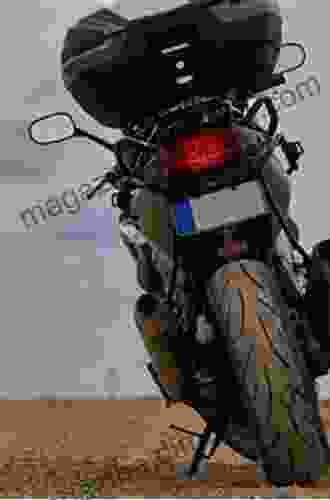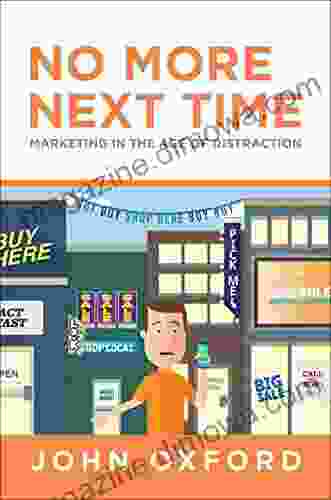Using Origami and Nature to Revolutionize Technology: A Glimpse into the Future of Materials Science

5 out of 5
| Language | : | English |
| File size | : | 14704 KB |
| Text-to-Speech | : | Enabled |
| Screen Reader | : | Supported |
| Enhanced typesetting | : | Enabled |
| Word Wise | : | Enabled |
| Print length | : | 104 pages |
The world of materials science is on the cusp of a major transformation, thanks to the convergence of two powerful sources of inspiration: origami and nature. Origami, the ancient Japanese art of paper folding, and nature, with its vast array of biological structures, are providing scientists with invaluable insights into the design and manipulation of materials. By mimicking the intricate folding patterns and functional designs found in nature, researchers are developing a new generation of materials that are not only stronger and lighter but also more sustainable and responsive.
Origami-Inspired Materials
Origami has long been admired for its ability to create complex three-dimensional structures from a single sheet of paper. In recent years, materials scientists have begun to explore the potential of origami-inspired designs to create new materials with unique properties.
One promising area of research is the development of origami-inspired metamaterials. Metamaterials are artificial materials that exhibit unusual properties not found in nature, such as the ability to manipulate light or sound waves in unprecedented ways. By incorporating origami-inspired folding patterns into metamaterials, scientists can create materials with properties that can be precisely tuned for specific applications.
For example, researchers at the University of California, Berkeley have developed an origami-inspired metamaterial that can bend light in a way that could lead to the development of new optical devices, such as lenses and holograms. Other researchers at the Massachusetts Institute of Technology have created an origami-inspired metamaterial that can absorb sound waves in a specific frequency range, which could be used to create noise-canceling devices or acoustic cloaking materials.
Biomimetic Designs
Nature is another rich source of inspiration for materials scientists. Biological structures have evolved over millions of years to perform specific functions, and they often exhibit remarkable strength, lightness, and adaptability. By studying the design principles found in nature, scientists can develop new materials that mimic the properties of natural materials.
One example of biomimicry in materials science is the development of gecko-inspired adhesives. Geckos have the ability to climb walls and ceilings thanks to tiny hairs on their feet that allow them to adhere to surfaces using van der Waals forces. Researchers have developed synthetic adhesives inspired by gecko feet that can be used in a variety of applications, such as robotics and medical devices.
Another example of biomimicry is the development of self-healing materials. Many biological organisms have the ability to repair themselves after injury. Scientists are developing synthetic materials that mimic this ability, which could lead to the development of new materials that are more durable and resistant to damage.
Applications in Various Fields
Origami-inspired materials and biomimetic designs have the potential to revolutionize a wide range of fields, including:
* Electronics: Origami-inspired metamaterials could lead to the development of new types of electronic devices, such as flexible displays, wearable sensors, and 3D circuits. * Healthcare: Biomimetic materials could be used to develop new medical devices, such as artificial bones, tissue scaffolds, and drug delivery systems. * Transportation: Origami-inspired designs could lead to the development of lighter and more fuel-efficient vehicles. * Construction: Biomimetic materials could be used to develop new building materials that are stronger, more durable, and more sustainable.
The convergence of origami and nature is opening up new possibilities for materials science. By mimicking the intricate folding patterns and functional designs found in nature, scientists are developing a new generation of materials that are not only stronger and lighter but also more sustainable and responsive. These materials have the potential to revolutionize a wide range of fields, from electronics to healthcare, transportation, and construction.
As we continue to explore the potential of origami and nature, we can expect to see even more amazing and innovative materials emerge in the years to come. These materials will play a key role in shaping the future of our world, making it more sustainable, more advanced, and more connected.
5 out of 5
| Language | : | English |
| File size | : | 14704 KB |
| Text-to-Speech | : | Enabled |
| Screen Reader | : | Supported |
| Enhanced typesetting | : | Enabled |
| Word Wise | : | Enabled |
| Print length | : | 104 pages |
Do you want to contribute by writing guest posts on this blog?
Please contact us and send us a resume of previous articles that you have written.
 Book
Book Novel
Novel Page
Page Chapter
Chapter Text
Text Story
Story Genre
Genre Reader
Reader Library
Library Paperback
Paperback E-book
E-book Magazine
Magazine Newspaper
Newspaper Paragraph
Paragraph Sentence
Sentence Bookmark
Bookmark Shelf
Shelf Glossary
Glossary Bibliography
Bibliography Foreword
Foreword Preface
Preface Synopsis
Synopsis Annotation
Annotation Footnote
Footnote Manuscript
Manuscript Scroll
Scroll Codex
Codex Tome
Tome Bestseller
Bestseller Classics
Classics Library card
Library card Narrative
Narrative Biography
Biography Autobiography
Autobiography Memoir
Memoir Reference
Reference Encyclopedia
Encyclopedia Philip L Fradkin
Philip L Fradkin Steven Cha
Steven Cha Kathy Wilson
Kathy Wilson Pernille Pang
Pernille Pang Lindsey Pogue
Lindsey Pogue William Patten
William Patten Jo Piazza
Jo Piazza Mark Dugopolski
Mark Dugopolski Judy Young
Judy Young Rebecca Rich
Rebecca Rich Liam Shannon
Liam Shannon Joan Didion
Joan Didion Jim Keoghan
Jim Keoghan John Heaton
John Heaton Joe Cox
Joe Cox Manidipa Bhattacharyya
Manidipa Bhattacharyya Kathy Petrakis
Kathy Petrakis Rozsa Gaston
Rozsa Gaston John Maleyeff
John Maleyeff Sathyan Subbiah
Sathyan Subbiah
Light bulbAdvertise smarter! Our strategic ad space ensures maximum exposure. Reserve your spot today!

 George Bernard ShawPurodyssey: Tokyo Wrestling Diary - An Unforgettable Journey into the World...
George Bernard ShawPurodyssey: Tokyo Wrestling Diary - An Unforgettable Journey into the World... Emmett MitchellFollow ·10.3k
Emmett MitchellFollow ·10.3k Paulo CoelhoFollow ·7k
Paulo CoelhoFollow ·7k Kenneth ParkerFollow ·19.9k
Kenneth ParkerFollow ·19.9k Forrest ReedFollow ·13.3k
Forrest ReedFollow ·13.3k Patrick HayesFollow ·4.9k
Patrick HayesFollow ·4.9k Harvey HughesFollow ·17.8k
Harvey HughesFollow ·17.8k Herbert CoxFollow ·3k
Herbert CoxFollow ·3k Jamison CoxFollow ·3.3k
Jamison CoxFollow ·3.3k

 Joshua Reed
Joshua ReedTake Your Marketing Business Into The Next Level
Are you ready to...
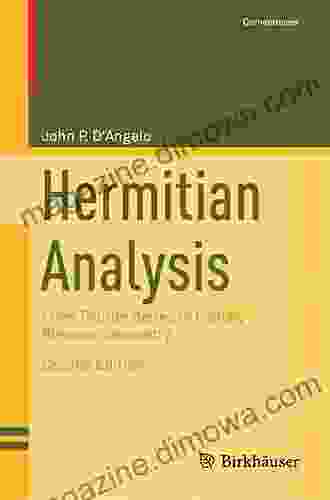
 Aaron Brooks
Aaron BrooksFrom Fourier to Cauchy-Riemann: Geometry Cornerstones
From Fourier to Cauchy-Riemann: Geometry...
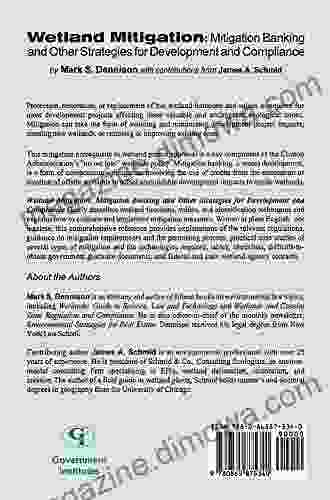
 Orson Scott Card
Orson Scott CardUnveiling the Art of Mitigation Banking: A Comprehensive...
In the intricate dance between...

 Victor Hugo
Victor HugoUnleash Your Creativity: A Journey Through the Enchanting...
Prepare to be captivated as we...

 Duncan Cox
Duncan CoxLoad of Bull: An Englishman's Adventures in Madrid
By Simon Bunce ...
5 out of 5
| Language | : | English |
| File size | : | 14704 KB |
| Text-to-Speech | : | Enabled |
| Screen Reader | : | Supported |
| Enhanced typesetting | : | Enabled |
| Word Wise | : | Enabled |
| Print length | : | 104 pages |


